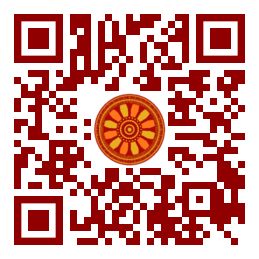
:: International Transaction Journal of Engineering, Management, & Applied Sciences & Technologies
http://TuEngr.com

ISSN 2228-9860
eISSN 1906-9642
CODEN: ITJEA8
FEATURE PEER-REVIEWED ARTICLE
Vol.13(3)(2022) |
Analyzing Impact of Saudi Tourism Investment on Employment and Overall Economy using Structure Equation Modeling Approach
 Caroline Mahmood Khan (Department of Economics, Faculty of Economics and Administration, King Abdulaziz University, Jeddah, SAUDI ARABIA).
Caroline Mahmood Khan (Department of Economics, Faculty of Economics and Administration, King Abdulaziz University, Jeddah, SAUDI ARABIA).
Disciplinary: Management & Economics, Econometrics.
doi: 10.14456/ITJEMAST.2022.49
Keywords:Microeconomics; Employment; Tourism; Econometrics; Hospitality; Kingdom of Saudi Arabia (KSA); Growth pole; Luxury scale investment; Tourism industry; Midscale investment; Economic scale investment; Hospitality
AbstractThis paper is written with two objectives firstly, to investigate the relationship between tourism investment and jobs creation in a developing economy and secondly, to compare different types of Investments whether they generate jobs in the economy particularly in the sector of tourism and leisure or in any other sector indirectly. To test the desired hypothesis an econometrics Panel autoregressive distributed lag regression model was assessed. It investigates the effect of total investment in different categories and its effect on employment, the standard of living and the overall economy in tourism, leisure and hospitality industries in the kingdom of Saudi Arabia (KSA). After the data analysis, it was found that investment in different categories increases employment in the overall economy in various sectors such as tourism, leisure and Hospitality Industries in the Kingdom of Saudi Arabia. The research is based on the main suggestions propounded by growth pole theory and the results also support recommendations for growth pole theory which is when investment increases economy observe its advantages in different areas. Therefore this research explores the relationship between investment and employment levels and has implications for the overall economic growth.Paper ID: 13A3G
Cite this article:
Khan, C. M. (2022). Analyzing Impact of Saudi Tourism Investment on Employment and Overall Economy using Structure Equation Modeling Approach. International Transaction Journal of Engineering, Management, & Applied Sciences & Technologies, 13(3), 13A3G, 1-9. http://TUENGR.COM/V13/13A3G.pdf DOI: 10.14456/ITJEMAST.2022.49
References
- Archer, B. and Fletcher, J. (1996). The economic impact of tourism in the Seychelles. Annals of Tourism Research, 23(1), 32-47.
- Burfisher, M.E. (2017). Introduction to Computable General Equilibrium Models, Cambridge University Press, Cambridge, MA.
- Canina, L. and Carvell, S. (2005). Lodging demand for urban hotels in major metropolitan markets. Journal of Hospitality and Tourism Research, 29(3), 291-311.
- Crompton, J.L. and McKay, S.L. (1994). Measuring the economic impact of festivals and events: some myths, misapplications and ethical dilemmas. Festival Management and Event Tourism, 2(1), 33-43.
- Demographia. (1996). Top 50 US metropolitan areas in 1996: population from 1950. Demographia. www.demographia.com/dm-usmet-fr50.htm
- Dogru, T. and Sirakaya-Turk, E. (2018). Modeling Turkish outbound tourism demand using a dynamic panel data approach. Tourism and Hospitality Research, 18(4), 411-414.
- Dogru, T., McGinley, S., Line, N. and Szende, P. (2019). Employee earnings growth in the leisure and hospitality industry. Tourism Management, 74, 1-11.
- Dogru, T., Mody, M., Suess, C., McGinley, S. and Line, N.D. (2020). The Airbnb paradox: positive employment effects in the hospitality industry. Tourism Management. DOI: 10.1016/j. tourman.2019.104001.
- Dwyer, L. (2015). Computable general equilibrium modelling: an important tool for tourism policy analysis. Tourism and Hospitality Management, 21(2), 111-126.
- Dwyer, L., Forsyth, P. and Spurr, R. (2004). Evaluating tourism's economic effects: new and old approaches. Tourism Management, 25(3), 307-317.
- Dzumbira, W., Geyer Jr, H.S. and Geyer, H.S. (2017). Measuring the spatial economic impact of the Maputo development corridor. Development Southern Africa, 34(5), 635-651.
- Keynes, J.M. (1937). The general theory of employment. The Quarterly Journal of Economics, 51(2), 209-223.
- Lee, S.K. and Jang, S.S. (2012). Re-examining the overcapacity of the US lodging industry. International Journal of Hospitality Management, 31(4), 1050-1058.
- Levin, A., Lin, C.F. and Chu, C.S.J. (2002). Unit root tests in panel data: asymptotic andfinite-sample properties. Journal of Econometrics, 108(1), 1-24.
- Liu, J. and Var, T. (1982). Differential multipliers for the accommodation sector. Tourism Management, 3(3), 177-187
- Mazumder, M.N.H., Al-Mamun, A., Al-Amin, A.Q. and Mohiuddin, M. (2012). Economic impact of tourism-a review of literatures on methodologies and their uses: 1969-2011. Visions for Global Tourism Industry-Creating and Sustaining Competitive Strategies, BoD-Books on Demand.
- Perroux, F. (1949). Les choix de l'etat producteur et l'application de la theorie des surplus du producteur et du consommateur. Econometrica, 17, 147-156.
- Rubin, V. and Rose, K. (2015). Strategies for Strengthening Anchor Institutions' Community Impact. PolicyLink, Oakland, CA, available at:www.policylink.org/sites/default/files/pl_brief_nola_institutional_FINAL3.pdf
- Song, H., Dwyer, L., Li, G. and Cao, Z. (2012). Tourism economics research: a review and assessment. Annals of Tourism Research, 39(3), 1653-1682.
- The US Bureau of Labor Statistics (2019). Job opening and labor turnover may 2019 survey. United States Department of Labor. www.bls.gov/news.release/pdf/jolts.pdf http://data.bls.gov/cgi-bin/dsrv
- Van Wyk, L.J.M., Saayman, M. and Rossouw, R. (2015). CGE or SAM? Ensuring quality information for decision-making. African Journal of Hospitality, Tourism & Leisure, 4, 1-20.
- Werts. (2020). Creating an environment for economic growth: creativity, entrepreneurship or human capital?. International Journal of Urban and Regional Research, 41(6), 997-1009.
Other issues:
Vol.13(3)(2022)
Vol.13(2)(2022)
Vol.13(1)(2022)
Archives
Call-for-Papers
Call-for-Scientific PapersCall-for-Research Papers: ITJEMAST invites you to submit high quality papers for full peer-review and possible publication in areas pertaining engineering, science, management and technology, especially interdisciplinary/cross-disciplinary/multidisciplinary subjects.
To publish your work in the next available issue, your manuscripts together with copyright transfer document signed by all authors can be submitted via email to Editor @ TuEngr.com (no space between). (please see all detail from Instructions for Authors)
Publication and peer-reviewed process:
After the peer-review process (4-10 weeks), articles will be on-line published in the available next issue. However, the International Transaction Journal of Engineering, Management, & Applied Sciences & Technologies cannot guarantee the exact publication time as the process may take longer time, subject to peer-review approval and adjustment of the submitted articles.